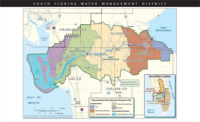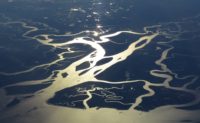$524M Florida Reservoir Project is Agency's Largest Everglades Contract
A joint venture of Lane Construction Corp. and Salini Impregilo is beginning work on a 10,500-acre storage reservoir beside the Caloosahatchee River in Hendry Co., Fla., to restore and maintain the river’s estuary near Fort Myers. The five-year, $524-million lump-sum contract is the largest ever awarded by the South Florida Water Management District, the agency responsible for the state’s work under the $16.4-billion Comprehensive Everglades Restoration Plan. Mobilization on site will be complete this fall, with substantial completion scheduled in the spring of 2024.
Lane is leading the JV with its parent Salini Impregilo. The March 14 award follows a Jan. 30 opening of four bids for the civil works project. With its bid 21% below the engineer’s estimate of $660.3 million, Lane Salini Impregilo was low, prompting a day-long bid confirmation meeting, says Alan Sharkey, engineering and construction bureau chief for the management district.
"In that meeting, the contract scope, including all major work components, specialized work components, construction sequencing, and site water management were all discussed and it was verified C-43 Water Management Builders JV had considered all those required aspects in their bid," Sharkey says. Bids ranged up to $880 million.
This is the last of four bid packages awarded since 2015 for the C-43 West Basin Storage Reservoir, boosting the total project cost to $1.1 billion, according to the U.S. Army Corps of Engineers, which shares costs equally with the state. The two-cell reservoir’s 19 miles of dam embankment will hold 170,000 acre-ft of water discharged from Lake Okeechobee to maintain a safe lake water elevation while storing water for irrigation.
The reservoir’s purpose is to improve the timing, quantity, and quality of freshwater flows to the Caloosahatchee River and estuary. Freshwater surges from lakewater discharge and nutrient loads in the lake’s water harm the ecology of the river and estuary, and toxic algal blooms fed by the nutrients have disrupted recreation and damaged the maritime economy of the state’s west coast.



